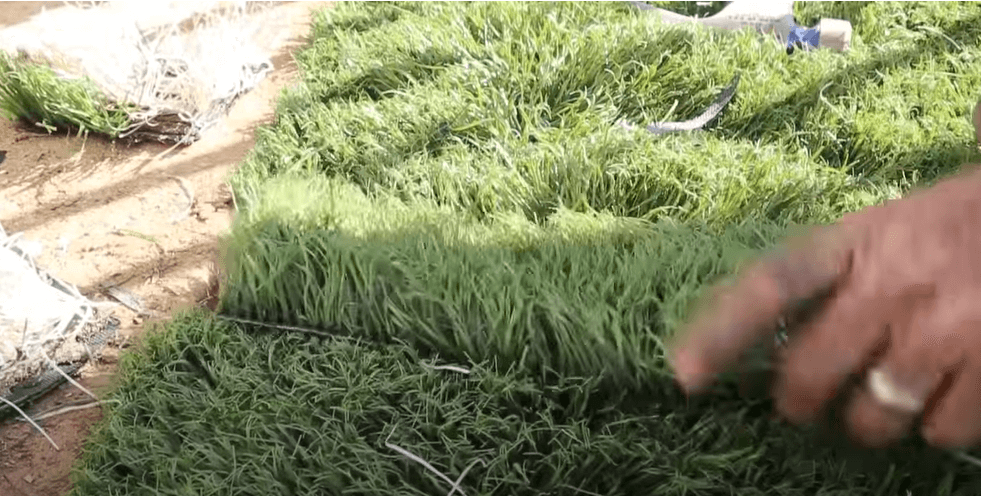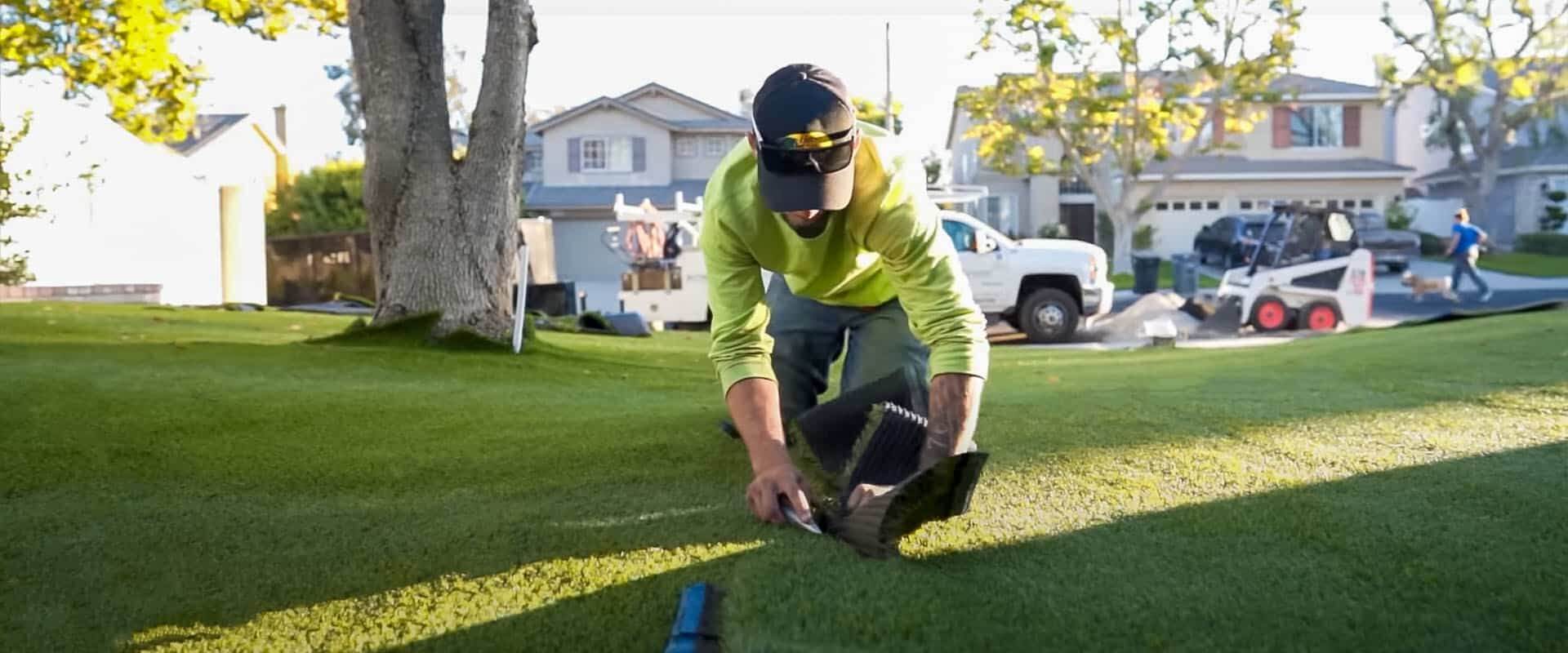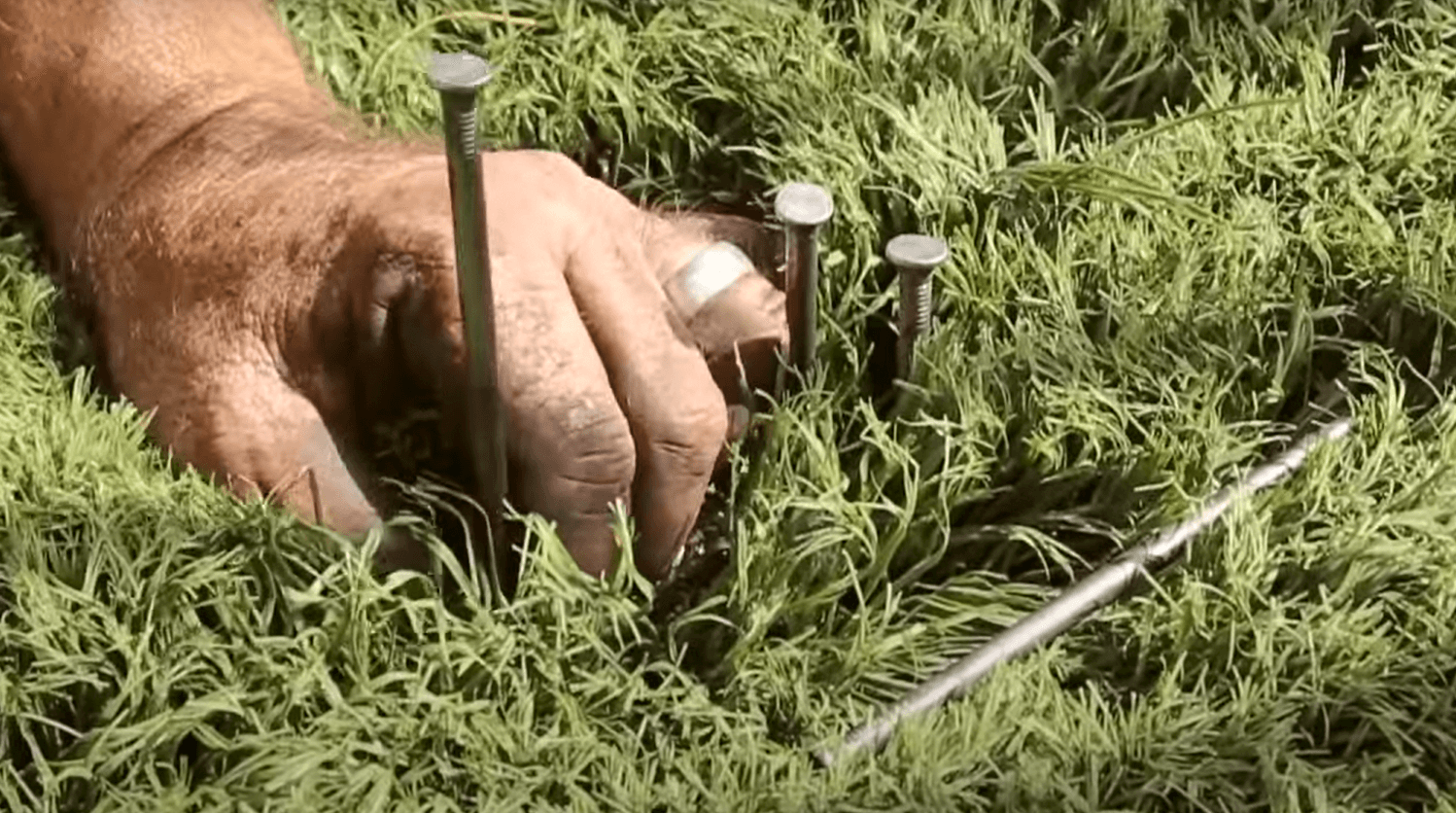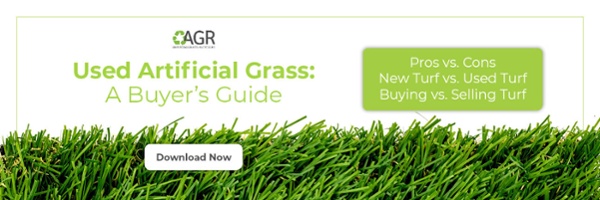Used artificial grass is an excellent option for property owners who want versatility without breaking the bank. Used turf can last over a decade, costing up to 75% less than new artificial grass.
Similar to new synthetic turf, used artificial grass requires regular maintenance. Paying close attention to the turf's condition can increase its lifespan and prevent unexpected expenses.
Used synthetic turf can sometimes arrive with minor imperfections that need attention. Thankfully, fixing artificial grass is usually a fast and easy DIY job. However, if the damage accumulates over time and becomes major, it may require professional attention.
With this guide, you can narrow down the causes behind artificial grass damage and learn how to fix them.
1. Spot the Signs of Artificial Turf Damage
The faster you spot the damage, the easier it is to repair. Otherwise, a small tear can turn into a large hole.
The most common types of artificial grass damage and imperfections are:
- Burn marks from cigarettes or charcoals
- Matting of fibers
- Jagged lines
- Bumps
- Wrinkles
- Uneven surface
- Bald patches
- Drainage problems
- Tears and holes
Remember that what may look like damage isn't always a problem. If you see a patch with flat grass fibers, don't rush to replace it. It may be sufficient to brush the grass and help the fibers stand back up.

2. Understand the Causes Behind the Damage
Before restoring artificial turf, you must understand where the damage comes from. By digging deeper into the underlying cause, you can prevent the problem from happening again.
Weeds and wildlife
If you don't install weed barrier fabric or gopher wire underneath the artificial turf, pests and weeds can try to make their way through the surface. This can lead to bumps and wrinkles.
When artificial grass surface becomes uneven, it doesn't just affect the appearance. It makes the turf more susceptible to UV light and heavy foot traffic damage. Bumps can also become a tripping hazard.
Transportation
During transportation, forklifts and other heavy machinery puncture the artificial turf to move it. That's why inspecting the turf during installation is imperative.
Extreme Heat
While UV-resistant artificial turf does an excellent job protecting the green sheen of the turf, it does not handle extreme heat well. Since the turf is made from synthetic materials, such as polyethylene, polypropylene, and nylon, it can melt or deform after coming into contact with hot objects.
These issues can occur when a cigarette or coal from the grill falls on the turf. Sunrays reflected from windows or other objects can have the same effect.
Extreme heat softens infill and causes compaction. This, in turn, affects cushioning and drainage. Swings in temperature from very hot to very cold can cause the turf to expand and contract. This results in wrinkles and bubble formation.
Freezing Cold
When temperatures drop below 32°F, artificial turf fibers may become stiff. This makes them less flexible. Meanwhile, frozen infill causes the surface to become hard and less cushioned. This makes it easier to damage the turf with regular use.
Similar to extreme heat situations, the turf contracts and expands when temperatures fluctuate. This may cause the artificial grass to wear out faster.
Heavy Foot Traffic
The fibers can become matted if many people and pets regularly walk over the artificial grass. Meanwhile, installing heavy lawn furniture or parking a car on artificial grass can lead to large matted patches. Matted fibers make the surface look less natural.
Uncleaned Pet Waste
If pet waste remains on the artificial grass's surface for too long, it can cause unpleasant odors and bacterial growth. The artificial turf will lose its lush color and develops permanent stains over time. Meanwhile, the waste can contaminate the infill and clog drainage systems.
Cleaning and restoring artificial turf after pet waste remains there for a long time may be impossible. You would have to replace the contaminated patch.
3. DIY Repairs for Minor Turf Damage
Minor synthetic turf repair isn't complicated. If you discover small issues with your used artificial grass, you only need several tools and a few minutes.

Tools and Materials for Repairing Artificial Grass Tears
These tools can help you fix the majority of minor problems with your artificial turf:
-
5-inch nails
-
Hammer
-
Box cutter
-
Turf glue (optional)
-
Seam tape (optional)
-
Turf paint (if needed)
-
Spare strips of artificial grass (if needed)
The above tools should be sufficient for preparing minor issues. If, in the process, you discover that the problem is more significant than you thought initially, you can always stop the repair and request professional assistance.
How to Repair Small Tears and Holes
To repair small tears and holes in your artificial grass surface, you need to take these steps:
-
Clean the area
-
Assess the damage
-
Hold the edges of the hole or tear together
-
Use 5-inch nails and a hammer to staple them to the ground
If the hole is large, you may need to remove the entire section of the turf and replace it with a piece of undamaged artificial grass.
How to Replace a Small Section of Turf
When you purchase used artificial turf, a good rule of thumb is to buy 30% more than you need for fitting irregularly-shaped areas and fixing imperfections. When you have one damaged section, replacing artificial grass isn't complicated.
-
Cut away the damaged section using a box cutter
-
Take a piece of excess turf and cut it to match the removed section
-
Place the excess on the surface and ensure that turf blades face the same way as the blades on the existing turf.
-
Secure the turf with 5-inch nails and a hammer
Alternatively, you can secure the new piece the same way you fix artificial turf seams. This involves using a combination of seam tape and turf glue. If you don't have these materials, nails will do just fine.
How to Repair Discolored Artificial Turf
Some types of damage could cause your artificial turf to lose color. Meanwhile, some pieces of used synthetic grass may not be perfectly uniform in color. Instead of fixing artificial grass with patches, you can use color-matching turf paint.
Spray-painting discolored or faded blades can give your used grass a fresh new look.
What To Do After Initial Repairs
Once you finish minor artificial grass repairs, you need to:
-
Blend the repair – use a soft-bristled brush or broom to brush the fibers of the repaired area and the surrounding turf together.
-
Inspect the repair – make sure the repaired area is secure and well-blended.
With the right approach, minor repairs remain invisible and don't interfere with day-to-day use.

4. Consider Professional Repairs for Major Turf Damage
Low-quality artificial turf installation or damage to the sub-base layer can cause serious issues that can't be fixed without professional attention. These problems include:
-
Poor drainage causing mold and mildew.
-
Debris buildup under the surface causing unevenness, bumps, and pooling water.
-
Compaction and uneven surfaces affecting the appearance and lifespan of the turf.
-
Soil erosion (poorly installed artificial turf can't control soil erosion).
If you encounter serious artificial turf issues, quick DIY fixes won't help. It's best to let professionals handle the problem since it may require digging up the synthetic turf to fix the sub-base layer.
5. Prevent Future Damage to Artificial Turf
Proper artificial turf maintenance is critical to avoiding damage in the future. Some of the most essential elements of high-quality care are:
-
Removing dirt, debris, and other pollutants by using water and a turf rake.
-
Cleaning stains and removing pet waste as soon as possible
-
Using special cleaning solutions to remove mold and mildew timely
-
Brushing your turf regularly
-
Trying to keep extreme heat and sharp objects away from the turf
Used artificial grass is an excellent cost-effective option for your turf needs. With the right approach to maintenance and minor repairs, this durable and beautiful surface can serve you for many years to come.
May 19, 2023 11:43:00 AM



